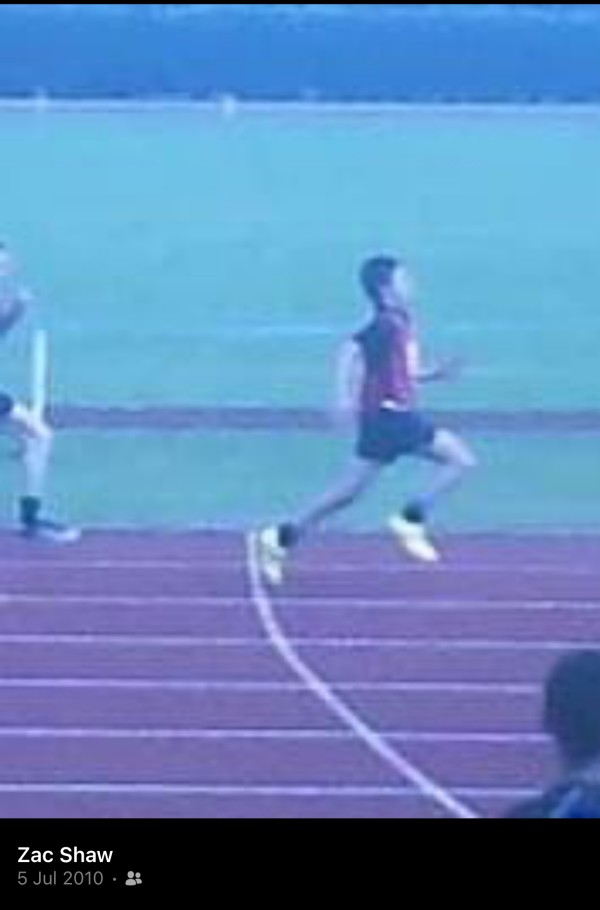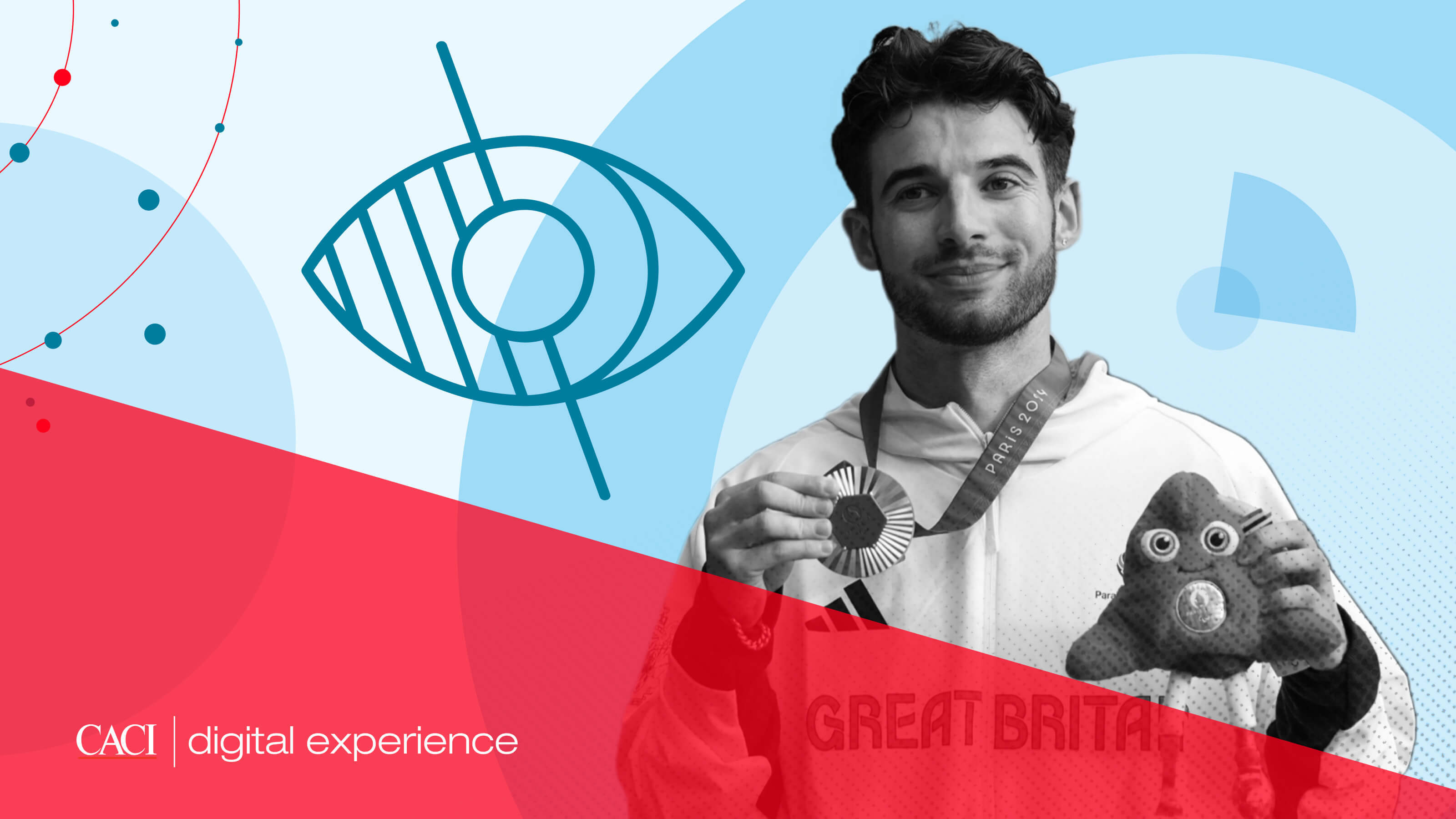Now everything has settled down since the Paralympic Games came to a close in Paris in September, it’s given me a chance to reflect on my journey to the Games and what they were like as a visually impaired person and what it means for my work on digital inclusion with CACI Digital Experience.
My Diagnosis

My journey to the Paralympics began in 2005, although I didn’t realise it at the time. Sitting at the back of the classroom in Year 5, I noticed I couldn’t read the whiteboard. I didn’t think much of it. However, over the following year or so, I went from a perfectly able 10-year-old to an 11-year-old going into secondary school with a rare eye condition called Stargardt’s Disease, that blocks out my central vision.
Along with a recent diagnosis of epilepsy and a completely new set-up at school, it was a very scary, confidence-draining situation for me. In the early years of secondary school, it was difficult to adapt to my new circumstances. The school did its best, but they didn’t have the technology or support in place to make it easy. One of those challenges was having to re-learn how I learned, as I was now forced to become an auditory learner, which wasn’t natural to me.
Discovering Paralympic Sport
I was always a pretty fast kid but wasn’t really into formal sport. But one day in Year 9, a teacher came to me and asked if I’d ever considered disability sport. The Paralympics GB team were looking to talent-spot ahead of London 2012 and beyond. I remember being very confused at the trial days I went to, as I never saw myself as someone with a disability. I couldn’t shrug off this perception of myself compared to people who had visible disabilities like being in a wheelchair.
However, after watching the London 2012 Paralympics on TV, I was inspired seeing what people with a range of disabilities could do. Watching the visually impaired athletes filled me with hope, but most importantly, it helped me accept that what I had was indeed a disability.
It’s been a long journey from that point until now. I represented Great Britain for the first time in 2015 at the World Championships, which was already beyond my wildest dreams, later taking World, European and Commonwealth medals. My dream has always been to call myself a Paralympian, but I was heartbroken twice by not being selected for Rio 2016 and Tokyo 2020, but kept focused on my goal.
Being part of Paris 2024
For Paris, I was determined not just to become a Paralympian, but to leave with a shiny medal. My dreams came true as I won Bronze in the T12 100m and Silver in the Universal 4x100m Relay alongside athletics legend, Jonnie Peacock, who had inspired me to start the sport back in 2012: truly a culmination of that journey.
Standing in the stadium holding the Union Jack aloft with 70,000 spectators screaming at the top of their voices is something I will never forget. I’m proud to have been part of it, but I’m even prouder that people are so invested in Paralympic sport and watching disabled people flourish.

Credit: ParalympicsGB
Accessibility Challenges, even at the Paralympics
Since being part of CACI, it’s given me another new perspective on accessibility, particularly the specifics of digital accessibility, beyond that I have from my lived experience as a visually impaired person. It’s opened my eyes even more to what is good accessibility, and what is bad accessibility, like overlay tools that claim to fix everything with one click.
It’s also given me the understanding that there are lots of potential solutions, but it isn’t a one-size-fits-all approach. And I found this, rather ironically, to be the case at the Paralympics itself.
The Paralympic Village was incredibly accessible for people with mobility issues. Every time you saw a step, there was also a ramp. A staircase? Sure, there’s a lift next to it. If you’re visually impaired, though, your experience was more difficult without a guide.
Although the lifts had Braille buttons, each lift had differently placed buttons, which made it very difficult for me to remember where each button was. I spent one day searching for the gym because I couldn’t see the signposts. I also couldn’t use the sponsored Coca-Cola machines as they were touchscreen, with no features to help me. Something that would have broken EU law just a year later due to the incoming 28th June 2025 European Accessibility Act deadline for new phygital touchscreens and kiosks
Equality matters
Coming from a sporting background, I can also often see disparities between Olympic and Paralympic sport, whether it’s the number of athletes who receive funding, facilities or otherwise. I know what equality looks like, and it frustrates me when I don’t see it. I’m happy I’m now able to bring this passion and desire for equality into the tech industry and my role at CACI.
It’s often not the case that brands directly choose to ignore accessibility and people with disabilities; I believe they are simply not aware of the impact it can have on people’s lives putting it further down the priority list as a ‘nice to have’ rather than how you deliver great experiences for as many people as possible. A minimum of 1 in 5 people have some form of disability that impacts how we live in the world. There is a distinct difference between complying with accessibility guidelines, and actually creating a good user experience that shows businesses really walking the walk rather than paying lip service to inclusion, and I can’t wait to spread the message.

